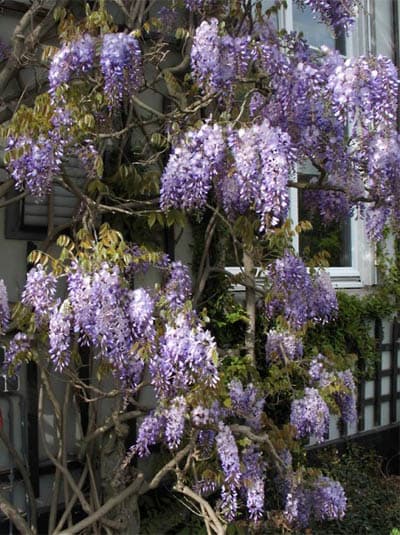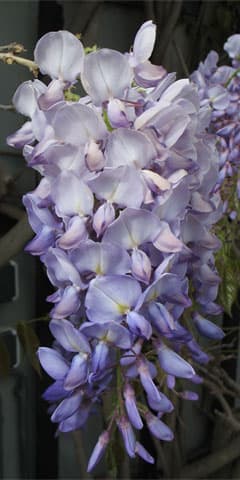The Wisteria vine that will grow from these seeds is a species that originated in Eastern China. Actually a member of the Pea family, it gained popularity during Victorian times as a lovely addition to the shade trees that graced family estates as well as being allowed to grow ivy-like on the houses themselves. It is a very hardy and fast-growing plant and can grow in fairly poor-quality soils. Although it prefers fertile, moist, well-drained soils, and thrives in full sun to partial shade.
The Chinese Wisteria is the more popular of the Wisteria plants due to its flowering habit. It grows to a height of 25 feet or more and has flower clusters six inches to a foot in length, which open before the foliage has expanded. Individual flowers in the clusters open all at once for a very showy display. Flowers are violet-blue and slightly fragrant. Plants are most showy from early to mid-May in most seasons. Wisterias climb best on wires, trellises, arbors and pergolas. They can be grown on solid, vertical surfaces if proper supports are provided, such as rows of wire attached four to six inches from the wall. Use sturdy, durable materials such as galvanized wire, tubing or wood.
This tough, woody vine is awesome in springtime as it leafs out and flowers with large, drooping grapelike clusters of purple-blue, fragrant flowers. It is stunning to see a wisteria draped from the limbs of a tall pine when in full bloom, a scene made more memorable by the blossoms appealing fragrance. Leaves are compound and consist of 7 to 13 leaflets to about 3 in (7.6 cm) in length. The flowers are followed by attractive velvety pods 6 in (15.2 cm) in length. In winter, wisteria is a tangled mass of naked woody stems that may or may not be picturesque depending on culture and circumstance. Chinese wisteria is usually very long lived and trunks can become quite large and attractively gnarly with age.


Eng.: Chinese wisteria. Suom.: Kiinansinisade, Köynnöstävä Sinisade. Sven.: Blåregn.














